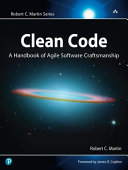

The importance of using meaningful names in code cannot be overstated. Names should convey intent and provide clarity about what the code does. This means choosing names that are descriptive, unambiguous, and relevant to the context of the code. For example, instead of using generic names like 'data' or 'temp', a developer should opt for names like 'customerList' or 'maxTemperature'. Meaningful names not only make the code more readable but also reduce the cognitive load on the developer, making it easier to understand the code at a glance. Furthermore, names should be consistent throughout the codebase and adhere to naming conventions. This consistency helps in maintaining the code and allows other developers to quickly grasp the functionality without needing extensive comments. The practice of using meaningful names also extends to functions and classes; they should be named in a way that reflects their purpose and behavior, providing a clear understanding of their role in the application.
Continue readingOne of the key principles of clean code is that functions should do one thing and do it well. This means that a function should have a single responsibility, which makes it easier to understand, test, and maintain. When a function is focused on a single task, it reduces complexity and enhances readability. For instance, a function that calculates the total sales for a month should not also handle logging or error management. By adhering to this principle, developers can create functions that are reusable and can be easily modified without affecting other parts of the code. Additionally, when functions are small and focused, they can be tested in isolation, leading to more reliable code. This practice encourages better organization of code and promotes a modular approach, where each component can be developed and maintained independently.
Continue readingWhile clean code should be self-explanatory, there are times when comments and documentation are necessary. However, the key is to use comments judiciously. Comments should not be used to explain what the code is doing; instead, they should clarify the 'why' behind complex logic or decisions made in the code. Good comments can provide context and rationale, aiding future developers in understanding the reasoning behind certain implementations. Moreover, documentation should be maintained alongside the code to ensure that it reflects the current state of the codebase. This includes writing clear and concise documentation for APIs, libraries, and modules. Over-reliance on comments can indicate that the code itself is not clear enough, so the goal should always be to write code that requires minimal explanation. In summary, while comments can be valuable, they should complement clean code rather than replace it.
Continue readingError handling is a critical aspect of writing clean code. Proper error handling ensures that an application can gracefully manage unexpected situations without crashing or producing misleading results. The book emphasizes the need for clear, consistent, and robust error handling strategies. This includes using exceptions rather than error codes, which can be ambiguous and lead to confusion. By throwing exceptions, developers can provide more detailed information about the error, making it easier to diagnose and fix issues. Additionally, error handling should be centralized where possible, allowing for a clean separation of error management from business logic. This approach not only keeps the codebase tidy but also enhances maintainability, as changes to error handling can be made in one place rather than scattered throughout the code. Ultimately, effective error handling contributes to a more reliable and user-friendly application.
Continue readingTesting is a cornerstone of clean code. The book advocates for writing tests to ensure that the code behaves as expected and to prevent future regressions. Test-driven development (TDD) is a practice where developers write tests before writing the actual code. This approach encourages developers to think critically about the requirements and design of the code before implementation. TDD leads to better-designed, more modular code that is easier to test and maintain. It also fosters a culture of quality within development teams, as writing tests becomes an integral part of the development process. The book discusses various testing strategies, including unit tests, integration tests, and acceptance tests, emphasizing the importance of having a comprehensive testing suite. By investing in testing, developers can produce high-quality code that meets user requirements and can evolve over time without introducing new bugs.
Continue readingClean code is not a one-time effort; it requires ongoing maintenance and improvement. Refactoring is the process of restructuring existing code without changing its external behavior. Regular refactoring helps to eliminate technical debt, improve code readability, and enhance performance. The book encourages developers to allocate time for refactoring as part of their development process. This can involve simplifying complex logic, breaking down large functions into smaller ones, or reorganizing code to adhere to clean code principles. Refactoring should be done continuously, rather than waiting for a major overhaul, to ensure that the codebase remains manageable and adaptable to changing requirements. By making refactoring a habit, developers can keep their codebase healthy and prevent it from becoming a tangled mess over time.
Continue readingCode reviews are an essential practice for maintaining clean code. They provide an opportunity for developers to collaborate, share knowledge, and identify potential issues before code is merged into the main codebase. The book highlights the importance of fostering a culture of constructive feedback during code reviews, where the focus is on improving the code rather than criticizing the developer. Code reviews can help catch errors, enforce coding standards, and promote best practices. Additionally, they encourage open communication within teams, leading to better understanding and alignment on coding practices. By engaging in regular code reviews, teams can collectively improve the quality of their code and ensure that it adheres to clean code principles. This collaborative approach not only enhances individual skills but also strengthens team dynamics and overall project success.
Continue reading